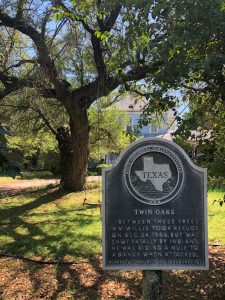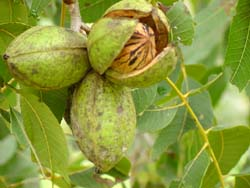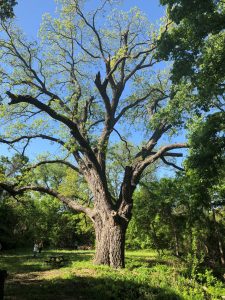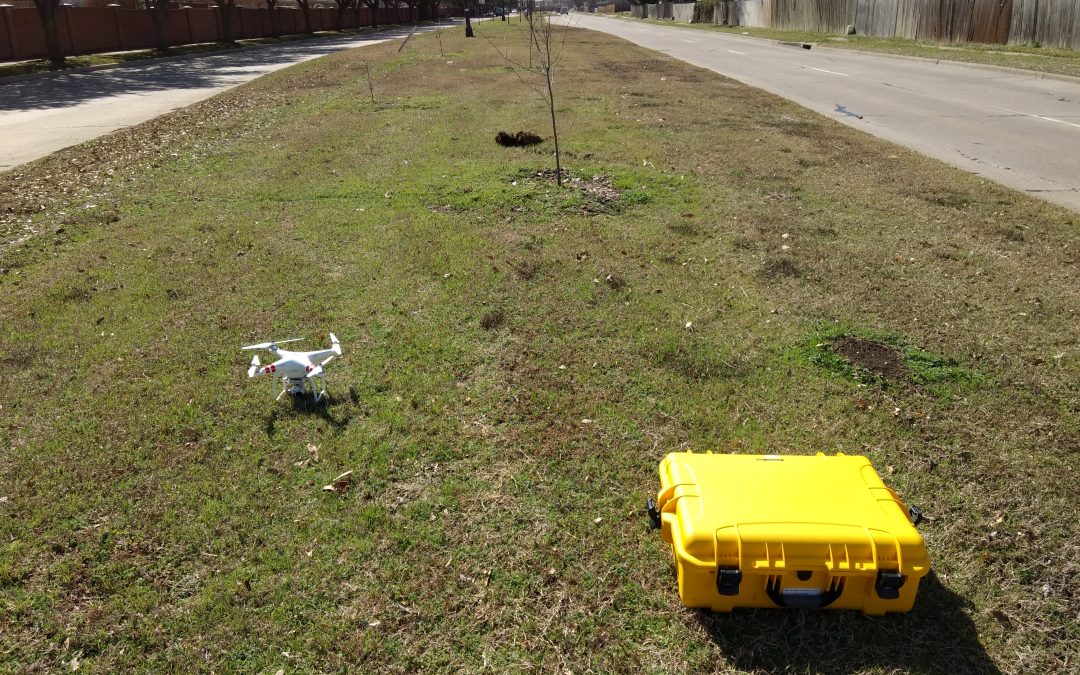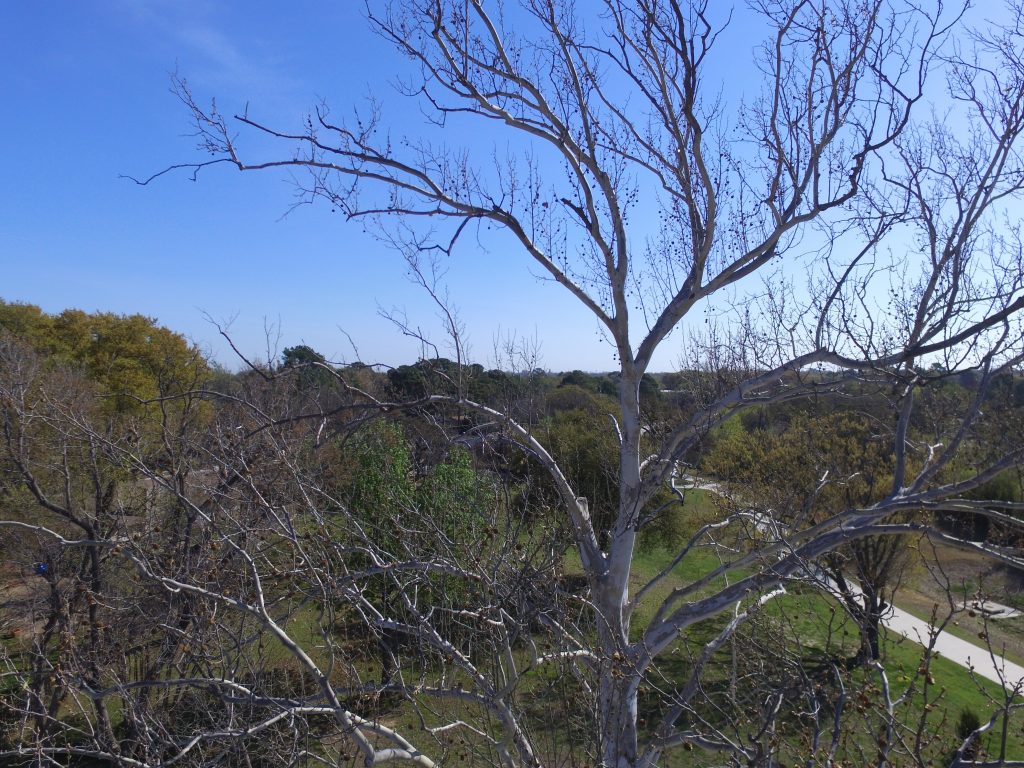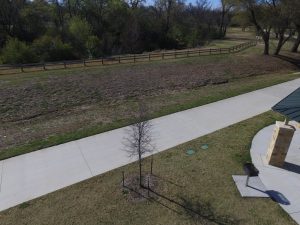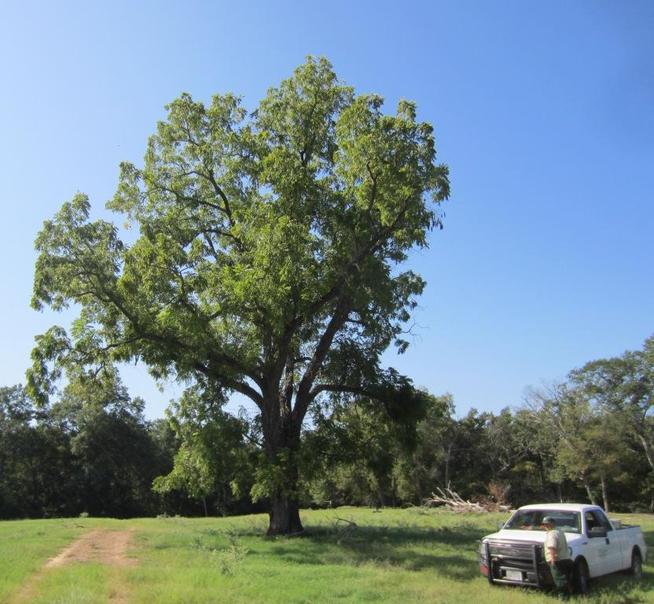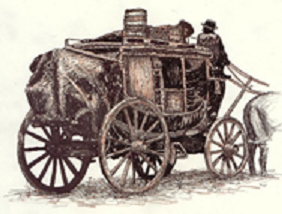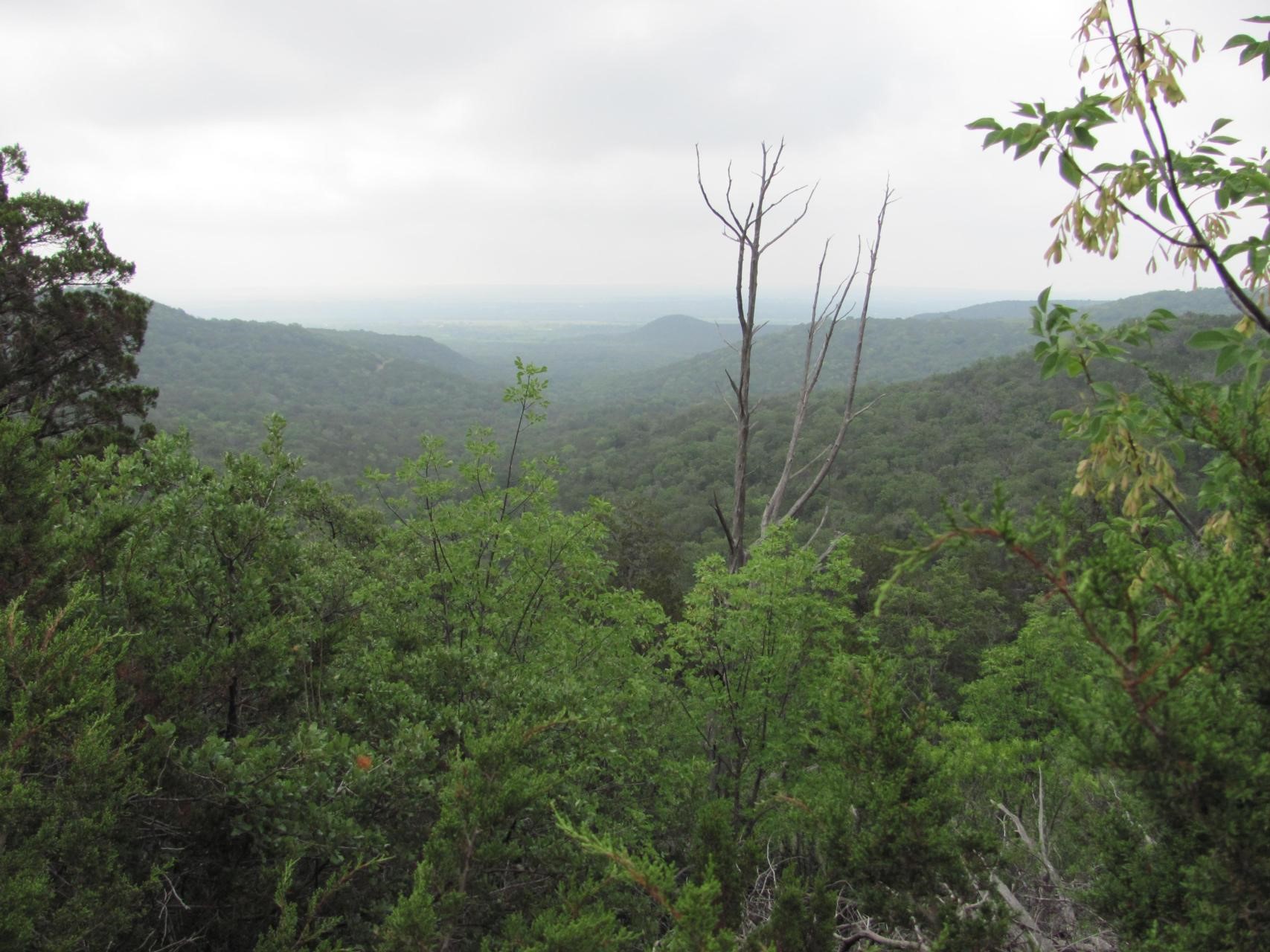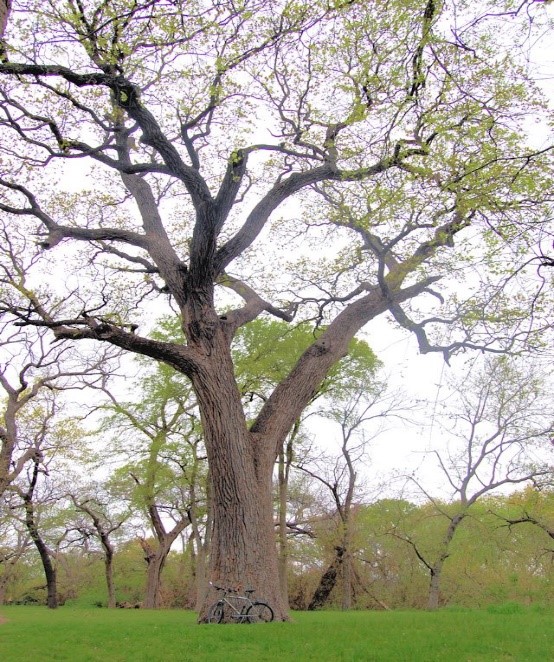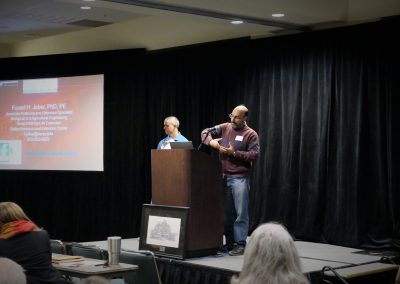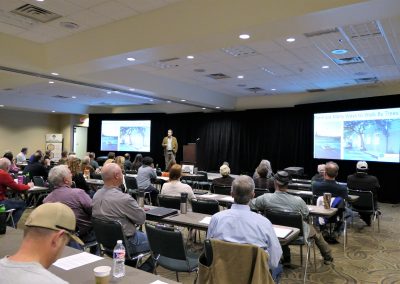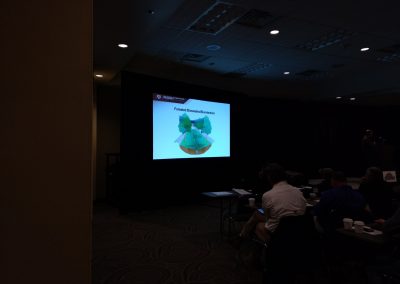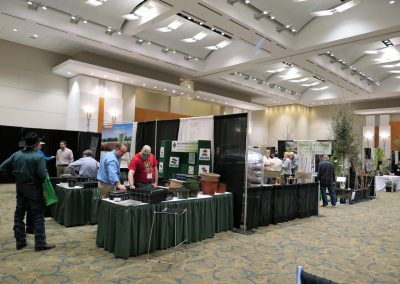
Eve’s Necklace Tree
Unique Trees of North Texas:
Eve’s Necklace
(Styphnolobium affine)
By Susan Henson
This is a unique spring bloomer that has been underutilized in the urban landscape. It is an attractive small tree that can be used under power lines, grows well in shade or full sun, plus blooms pink, fragrant, and wisteria-like flowers in the spring (March, April or May). The seed pods look like the old pop string pearls which help provide year round interest. Could be used as a replacement for Crape Myrtle and creates an impact when grown alone. Eve’s Necklace is a legume and since discovering the roots lack nitrogen fixing bacteria the name was changed from Sophora affinis to the current Styphnolobium affine.
Eve’s Necklace has lustrous green leaves, scaly reddish brown bark, and a rounded crown with yellow hard, dense sap wood. The yellow sap wood is used to make yellow dye. It grows quickly when young and can grow to 6 feet from seed in 3 years. When planted in a sunny location it reaches 15 feet in height quickly and then crown becomes more rounded and the growth slows. When grown in dense shade will become spindly to the point of looking almost vine like reaching for the sun. It is related to the Texas Mountain Laurel (Sophora secundiflora) which is evergreen. Leaves are divided into 6 to 8 pairs of leaflets plus a terminal leaflet on a rachis up to 9 inches long. Leaflets are elliptic to oval averaging an inch long, with a rounded, indented, or pointed tip, with smooth margins, and a rounded tapered base.
This tree thrives in the North Texas area on clay, sand, or limestone but the area should be well drained. The tree is native to Oklahoma, Arkansas, Louisiana, North Central and Central Texas. Once established this tree is extremely drought tolerant and only requires occasional watering. Can grow to 35 feet but have never seen it grow above 20 to 25 feet in height. In the wild it is usually an understory tree but can be found growing in roadsides, prairies, plains, meadows, pastures and open woodlands. Though short lived at 25 years they are easy to grow from seeds or cuttings. The bark is rather thin so particular care needs to be taken to protect young trees from weed trimmers.
The National Champion resides in Real County and is 37 feet tall, 77 inch circumference, a spread of 47 feet and an index rating of 125. There are specimens planted in Fort Worth as street trees on the north side of Park Hill between University and McCart, Turner Park in Grand Prairie, the campus of SAF under the power lines along the coliseum parking lot, San Antonio Botanical Gardens. The specimen in San Antonio Botanic Gardens is named ‘Amy’ and has a dark burgundy flower. The flowers can range from white to burgundy but are usually a lighter pink. This tree should be planted more in the DFW area.
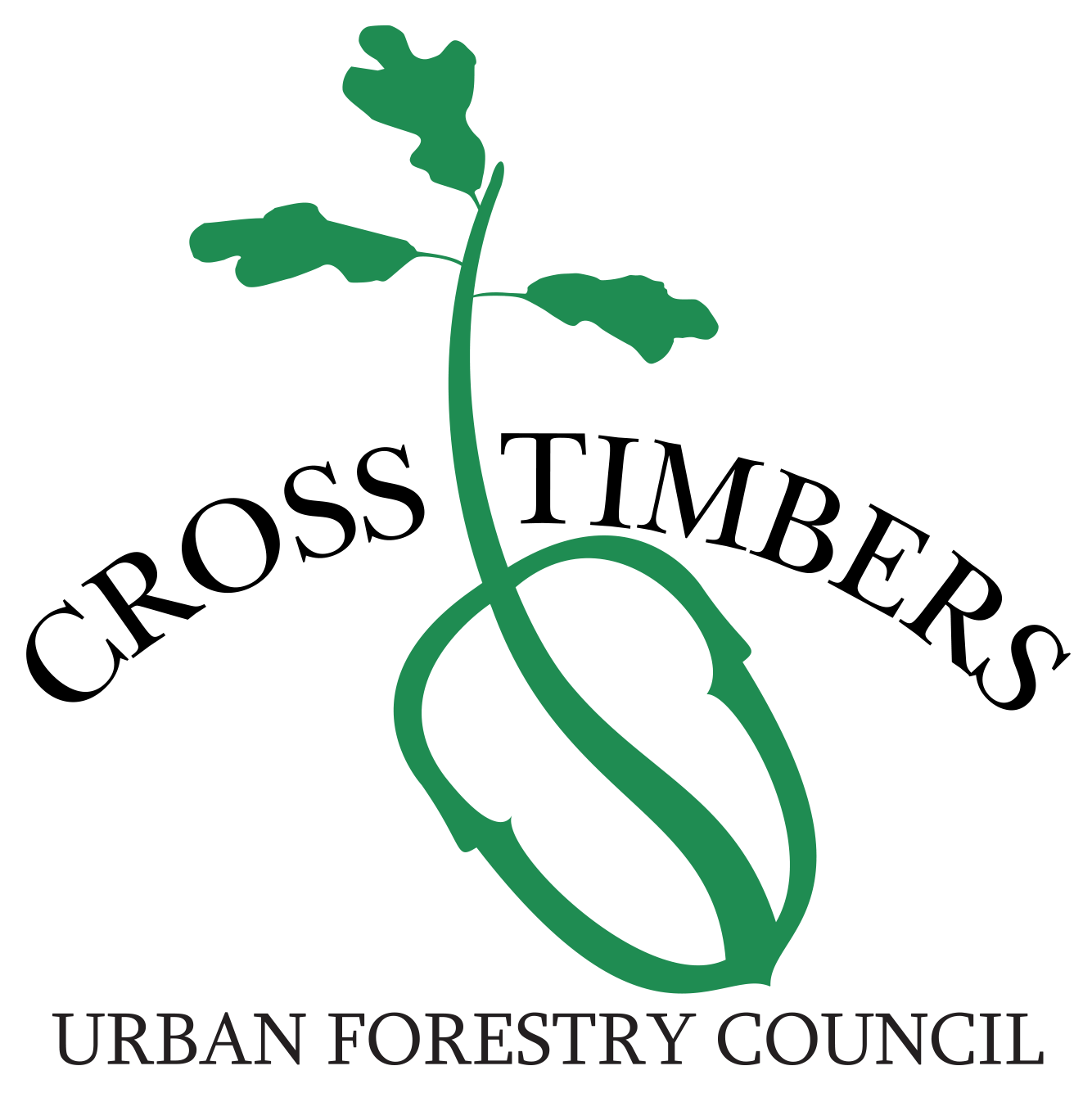

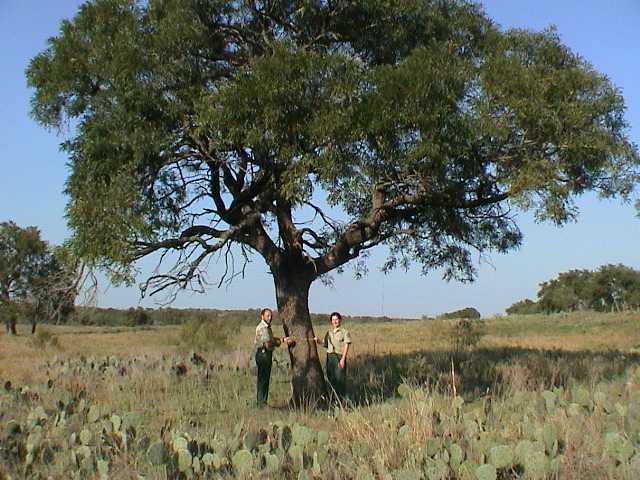
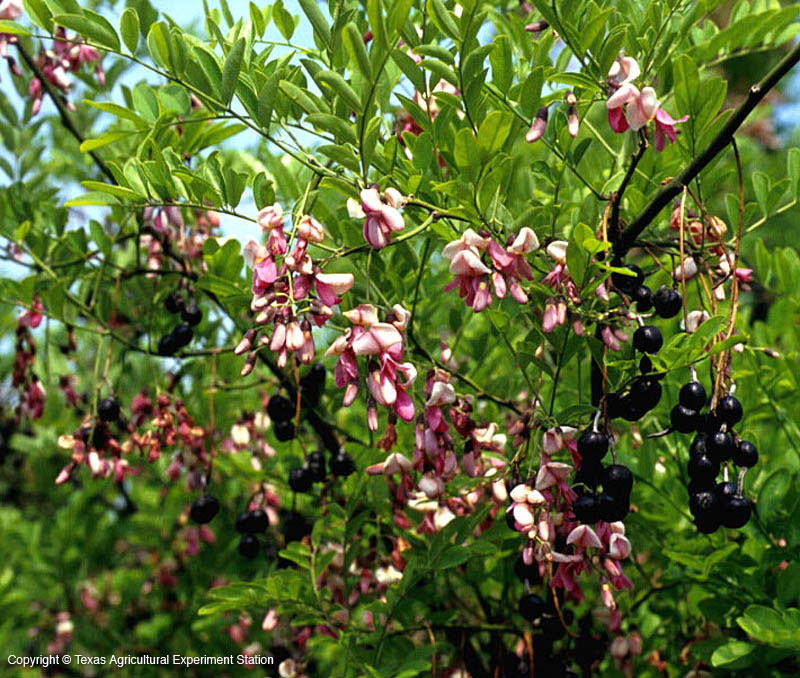
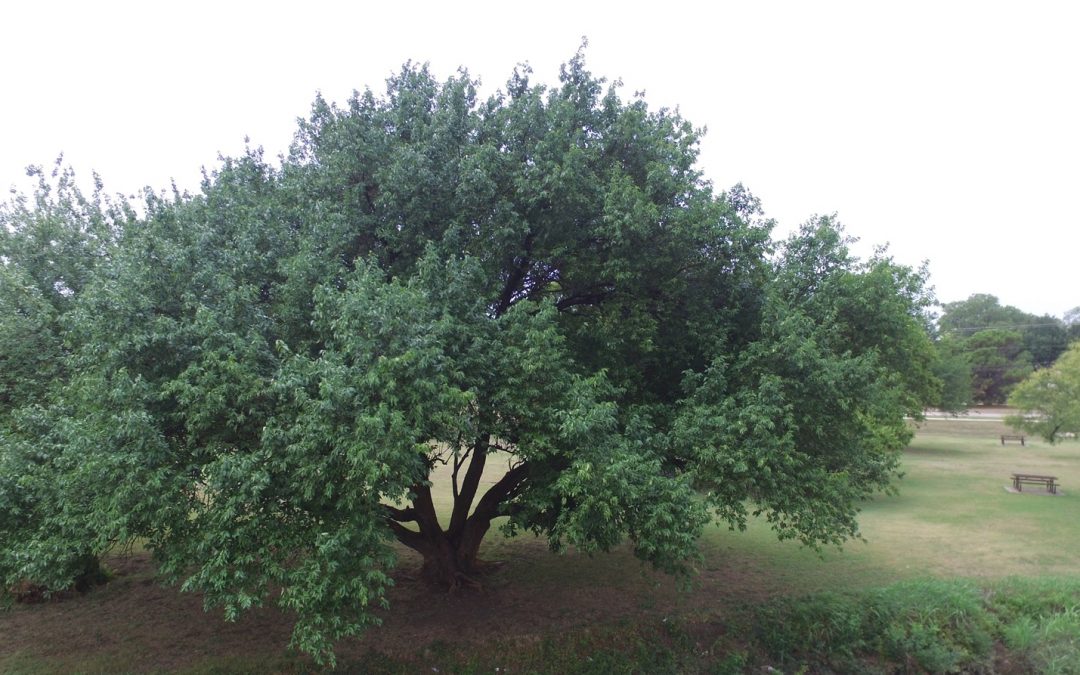


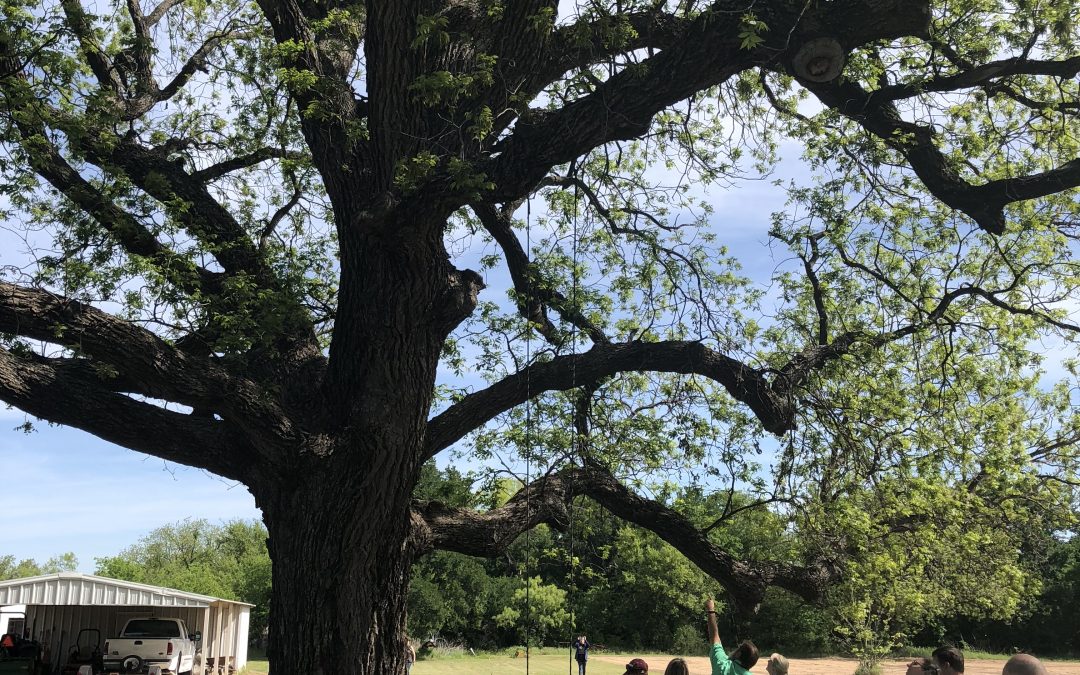

.jpg)
